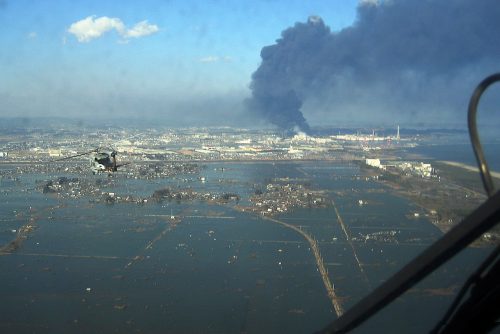Earthquakes that generate tsunamis can produce unique sound waves that have the power to improve warning times

The most advanced systems operating today to detect an approaching tsunami are based on buoys. Seismic data can indeed reveal to the authorities that an underwater earthquake has occurred, but it is floating sensors that often provide the important warning that the earthquake also triggered a series of destructive waves. And even then, the warning often comes only a few minutes before the waves arrive, if at all. To allow more time for the evacuation, scientists began to decipher a new aspect of the sounds that the underground earthquakes produce. Sound waves can travel through water at a speed of more than 1,500 meters per second, ten times faster than a tsunami.
Osama Kadri, an applied mathematician and engineer from Cardiff University in Wales and the Massachusetts Institute of Technology (MIT) is one of those scientists. He is particularly interested in the "acoustic gravity waves" that tsunami-generating earthquakes produce. The frequency of these underwater sound waves is so low that gravitational forces can change their wavelength and speed if there is a sudden change in pressure. In theory, the unique properties of these sound waves could potentially allow scientists to distinguish them from the background noise of the ocean. "Without a theory of acoustic gravity waves, one can know for sure that an earthquake has happened, but not if there is a tsunami," Kadri says.
As he described in his articles in the Journal of Geophysical Research, Kadri ran a simulation that used data from the tsunami that hit the Indian Ocean in December 2004 and killed hundreds of thousands of people. It took these waves two hours to reach Sri Lanka, for example, but the islanders received no tsunami warning. According to the research's calculations, if there was a detection station for acoustic gravity waves within a range of 1000 kilometers from the epicenter, the warning time could have been more than 90 minutes.
Kadri's research is important, but theoretical for now, and includes simplifying assumptions, he says Ali Abdullahi, post-doctoral student inCenter for applied research of beaches at the University of Delaware. Abdulalli is also trying to decipher the underwater sound waves that result from tsunami-causing vibrations. Actually, researchers have known for more than 60 years that underwater earthquakes produce unique sounds, but the availability of sensitive water microphones and high calculation speed have reignited interest in the field, says Thiago Oliveira, a postdoctoral fellow at the Woods Hole Institution of Oceanography, who worked with Kadri. However, Oliveira disagrees and says that it may take 10 years before the systems can rely on sounds to warn of an approaching tsunami.
More of the topic in Hayadan:
